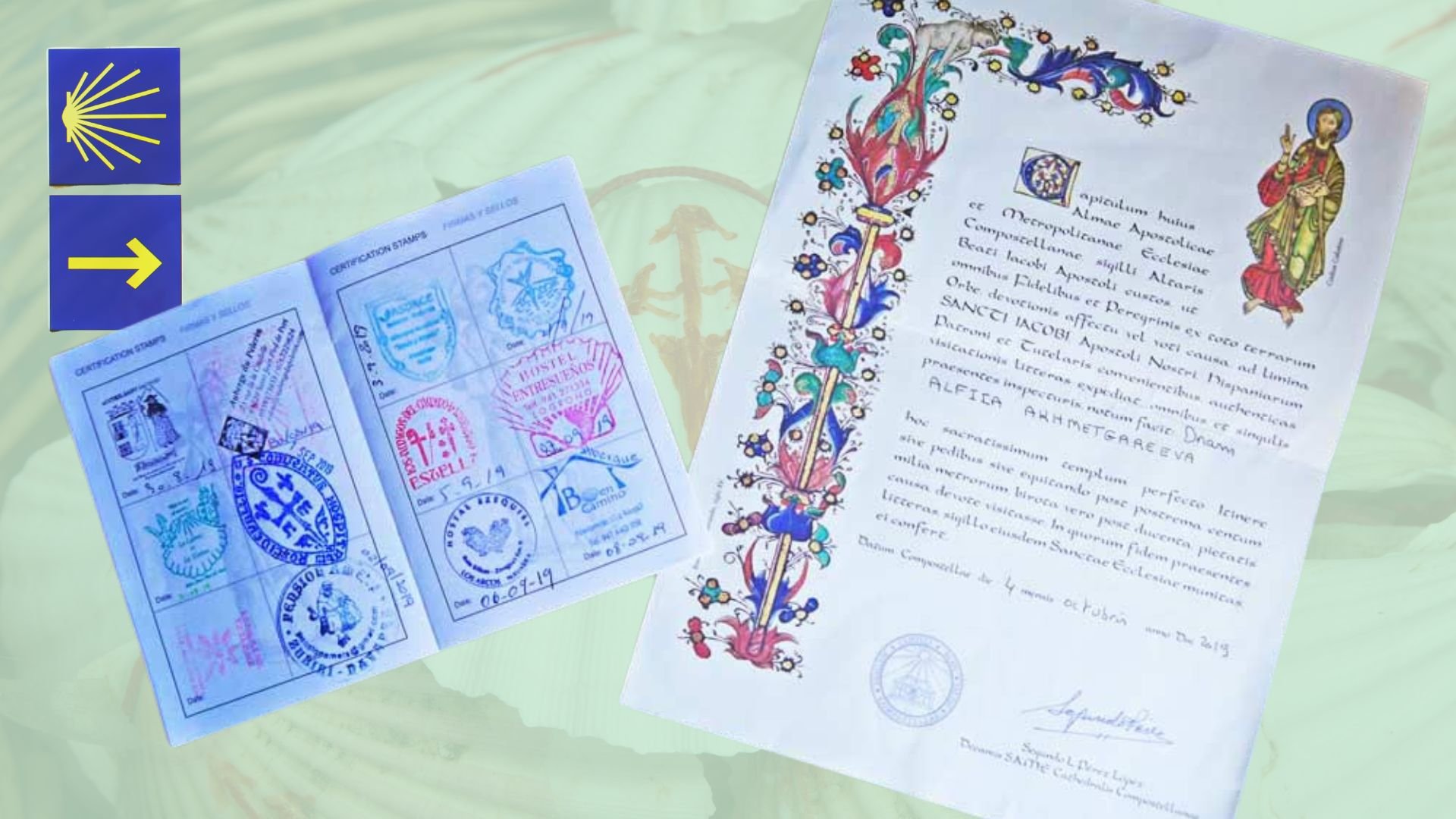Certificate of Distance vs. Compostela Camino Certificate
Camino de Santiago Credentials.
Embarking on the Camino de Santiago is a journey filled with meaning and recognition. Among the acknowledgments pilgrims can receive are the Certificate of Distance and the Compostela Certificate. Here's a detailed look at both.
The Certificate of Distance
The Certificate of Distance is a unique recognition for pilgrims on the Camino de Santiago. It details the starting point and the total distance travelled to Santiago de Compostela. This certificate is a testament to the physical journey undertaken by the pilgrim and serves as a cherished memento of the experience. It is available to all pilgrims, regardless of their reasons for undertaking the pilgrimage, and provides a personalised journey record.
The Compostela Certificate
The Compostela Certificate is a more traditional and spiritually significant document. It is awarded to those who complete the Camino de Santiago pilgrimage for religious or spiritual reasons. To qualify, pilgrims must walk at least 100 kilometres or cycle the last 200 kilometres to Santiago de Compostela. The Compostela validates the pilgrim’s journey, focusing on their spiritual commitment and pilgrimage purpose. This certificate has a long history, dating back to medieval times, and is a revered pilgrimage symbol.
Key Differences: Certificate of Distance vs. Compostela Certificate
Purpose and Eligibility:
The Certificate of Distance is available to all pilgrims, regardless of their motivation for the journey. It serves as a record of the distance covered.
The Compostela Certificate is specifically for those who undertake the pilgrimage for religious or spiritual reasons. Pilgrims must meet specific distance requirements and demonstrate their journey through stamped credentials.
Requirements:
There are no particular requirements for the Certificate of Distance other than completing a part of the Camino.
For the Compostela, pilgrims must walk or cycle the last 100 km or 200 km. They must also collect stamps on their pilgrim passport (credential) to prove their journey.
Historical Significance:
The Compostela has historical and spiritual significance, tracing its roots back to medieval times when pilgrims received it as proof of their pilgrimage.
The Certificate of Distance is a modern addition, providing a personalised record of the physical journey.
Issuing Authority:
Both certificates are issued by the Pilgrim’s Reception Office in Santiago de Compostela, but the Compostela holds more stringent criteria reflecting its spiritual importance.
Summary
Both the Certificate of Distance and the Compostela Certificate offer pilgrims meaningful recognition of their journey to Santiago de Compostela. While the Certificate of Distance highlights the physical achievement, the Compostela underscores the spiritual and religious significance of the pilgrimage. Understanding these differences helps pilgrims choose the recognition that best reflects their personal journey and motivation.
Takeaways
Certificate of Distance: Recognizes the physical journey and is available to all pilgrims.
Compostela Certificate: Awarded for religious or spiritual reasons, with specific distance requirements.
Requirements: The Certificate of Distance has no specific distance requirements, while the Compostela requires walking 100 km or cycling 200 km.
Historical Significance: The Compostela has deep historical roots, whereas the Certificate of Distance is a modern acknowledgment.
Issuing Authority: Both certificates are issued in Santiago de Compostela, with the Compostela having stricter criteria.
For more information, visit www.caminocompanions.com

